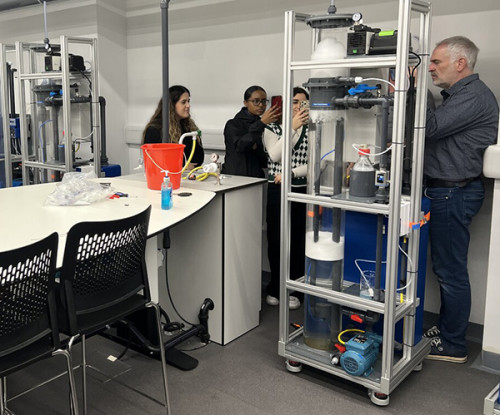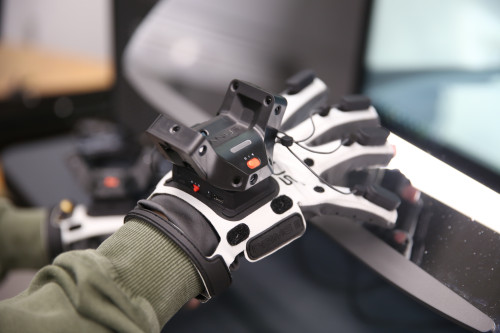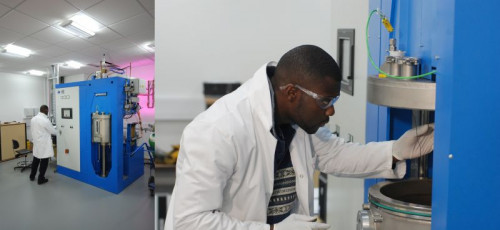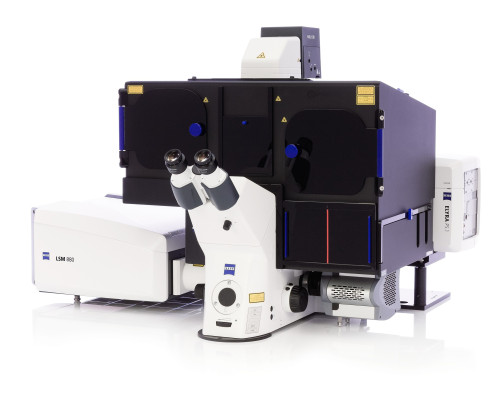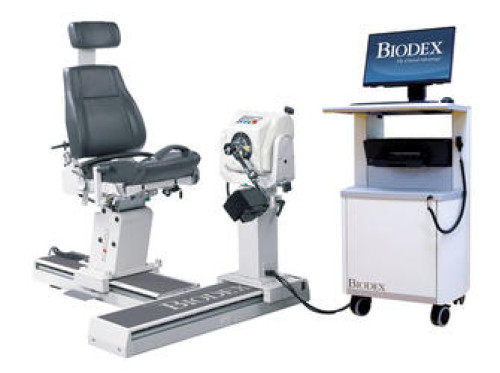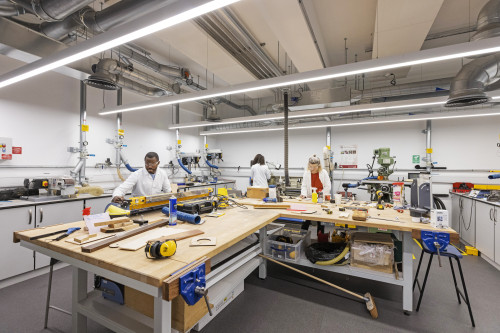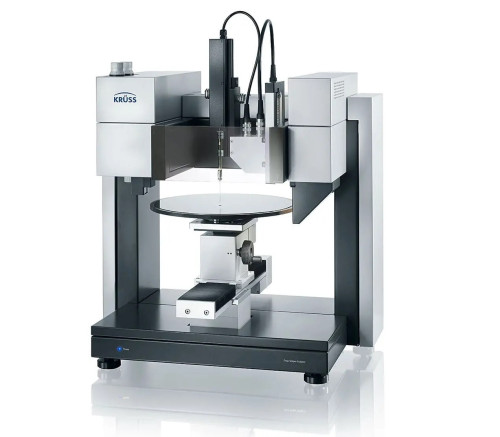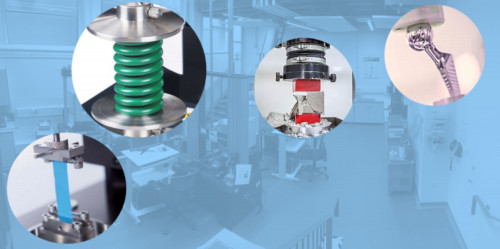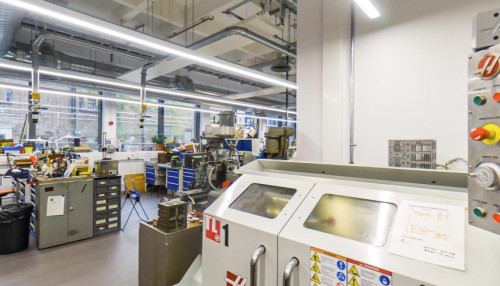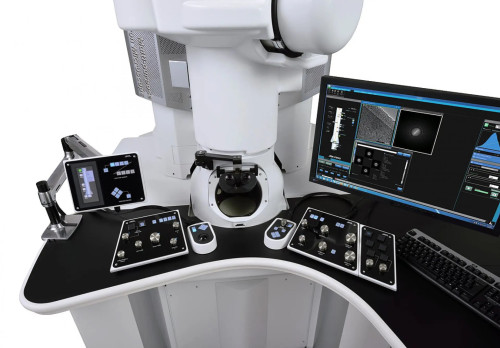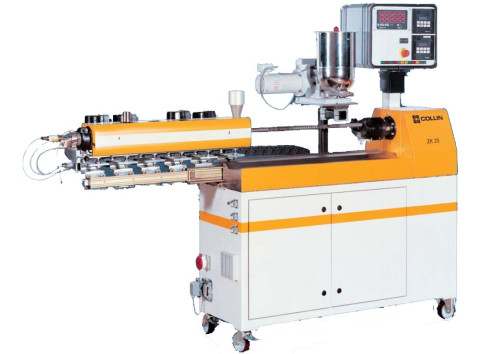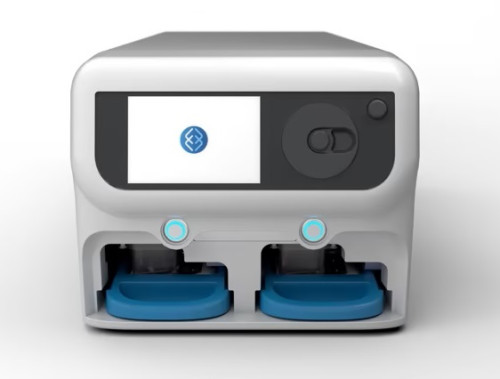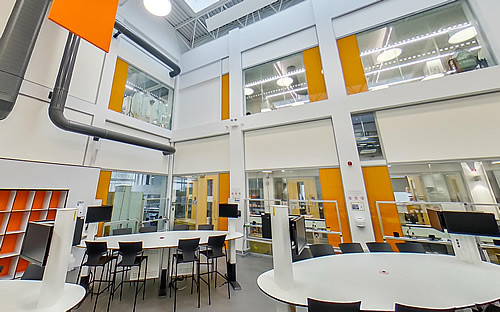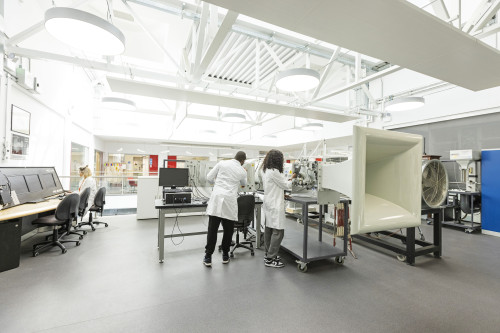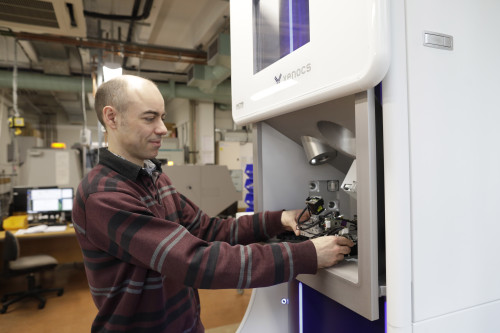SEMS Research Facilities
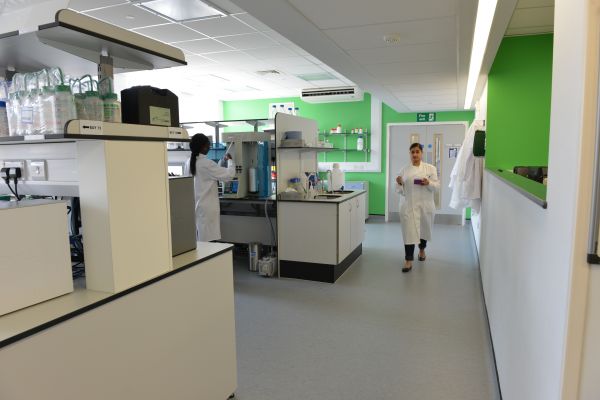
The School benefits from an excellent range of experimental and computational facilities and resources.
The facilities are also used for industrial contract testing and external collaborations. In addition, researchers within the school have access to many other specialised research facilities elsewhere in the university, such as NanoVision and the Blizzard Institute for Cell and Molecular Science.
Facilities
On this page:
- Advanced water purification system
- Cell and Tissue Engineering Labs
- Centre for Advanced Robotics at Queen Mary (ARQ)
- Ceramics processing
- Combustion Laboratory
- Computational Modelling Facilities
- Confocal Laser Scanning and Super-resolution Microscopy Lab
- Design Studio
- Electrical Characterisation Facilities
- Electrochemistry Facilities
- Electrospray Laboratory
- Flight Simulator
- Green Energy Hub
- Hardness Test Machine
- Human Performance Lab
- Impact Testing Facilities
- Intelligent BioFluids Lab
- The Makerspace
- Material Manufacturing Facilities
- Materials Characterisation Lab
- Materials Engineering in Magnetic Fields (MagMat) Facility
- Mechanical Testing Facilities
- Mechanical Workshop
- Mechanobiology and BioAFM Laboratories
- Medical Electronics Facility
- Nano Fluids Research Labs
- NanoVision Centre
- Photoelectrochemical Imaging Lab
- Photoelectron Spectroscopy Facility
- Photovoltaic device testing
- Piezoelectric energy harvester tester
- Polymer Processing Facility
- Q-Arena
- Queen Mary+Emulate Organs-on-Chips Centre
- Spectroscopy Facility
- Sustainable Thermal Systems Laboratory
- Thermal Analysis Facility
- Thermoelectric Generator Testing Facility
- Thermoelectric Suite
- Undergraduate Teaching Labs
- Whitehead Aeronautical Laboratory
- X-Ray Diffraction Facility
Advanced water purification system
- State-of-the-art upflow foam fractionation and downflow filtration columns.
- A renewed fluidised bed reactor system (The Expansion Column),
- The Hydrometer: an advanced sensor that precisely measures the performance of a multiphase reactor.
Cell and Tissue Engineering Labs
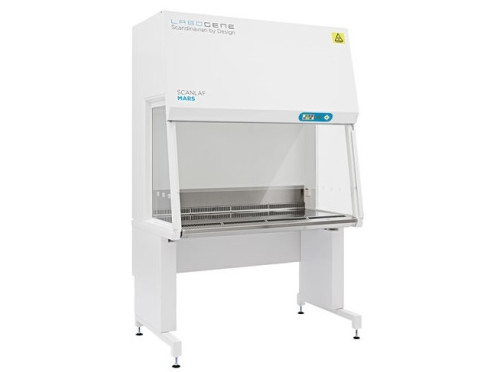
LaboGene Microbiological Safety Cabinet
Facilities for tissue engineering, mechanobiology and biomechanics research and teaching. The facilities include five dedicated cell culture laboratories, a molecular biology facility and general purpose and biochemistry laboratories. The labs house machines for mechanical testing of biological tissues or implantable materials as well as equipment for a wide range of biochemical/cell biology analysis.
Contact: Joanna Hickling
Centre for Advanced Robotics at Queen Mary (ARQ)
The laboratory is equipped with robotic arms, mobile platforms, mechatronic systems and control systems, which are used to research swarm robots, human-like robotic systems, virtual reality interfaces, haptic interfaces, and human motion tracking systems.
Contact: Prof Kaspar Althoefer
Ceramics processing
Spark Plasma Sintering (SPS) - Energy efficient, high speed powder consolidation process
Combustion Laboratory
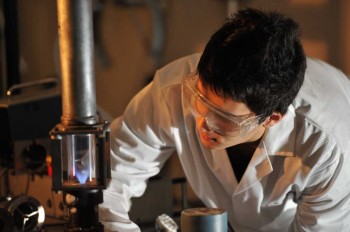
Research in combustion science concentrates on engine performance testing and emissions. The Internal Combustion Engine laboratory contains five test beds including a four cylinder diesel engine with optical access to the combustion chamber and a variable compression ratio Ricardo engine.
In addition the school possesses an almost unique, high pressure, steady-state combustion rig for studying the fundamental physics behind the combustion process.
Contact: Prof Xi Jiang
Computational Modelling Facilities
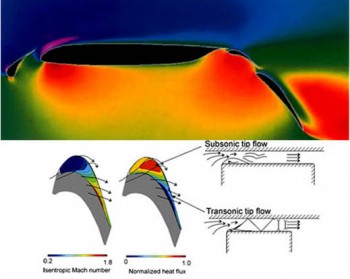
Prediction of flow around : 1- A Multi-Element Wing 2-A Jet Engine Gas Turbine Blade using Computational Aerodynamics.
The Centre has access to the Queen Mary Computing Clusters Apocrita and DERI Andrena, including dedicated use of CPU/GPU nodes for running parallel simulations on-demand. Computational researchers also have access to Tier-1 and Tier-2 national supercomputing facilities, such as ARCHER2, Isambard, CSD3, and Cirrus.
Contact: Prof Sergey Karabasov
Confocal Laser Scanning and Super-resolution Microscopy Lab
A confocal microscopy containing two laser scanning confocal microscopes - a Perkin Elmer spinning disc system and a Leica SP2 with multiphoton laser and lifetime imaging system.
The lab is capable of live cell fluorescence imaging (GFP, calcium imaging etc), 3D reconstruction and morphological measurement, photobleaching assays such as FRAP and FLIP and fluorescence lifetime microscopy(FLIM). The microscopes also interface with sophisticated mechanical loading systems for tissues, individual living cells (micropipette aspiration) and artificial constructs.
Contact: Prof Martin Knight
Design Studio

Individual work in the Design Studio
Our fully refurbished Design Studio is a creative space where students receive tutorials, share ideas, collaborate on projects, or focus on their individual work. It acts as a focus throughout the creative life of our design students, who exclusively use this space to continue their practice outside their timetabled tutorials. After design ideation, sketching and early prototyping in this space, students can cross the corridor to the Makerspace where they can build more refined test prototypes for their innovative projects using hand or machine tools.
Contact: Dr Karen Shoop
Electrical Characterisation Facilities
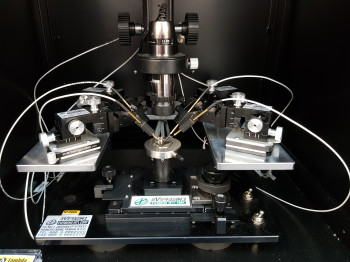
Low noise probe station
A range of electrical characterisation facilities are available for the measurement of electrical conductivity, field-effect mobility and device characteristics. This includes a 4-point probe resistivity measurement system (Osilla) and a shielded low noise probe station. These can be connected to a range of units including a Keithley 2636B SMU, a Keithley 3390 Function Generator, a Keithley 6517B/E electrometer and a GW Instek 8105G LCR meter.
Contact: Dr Oliver Fenwick
Electrochemistry Facilities
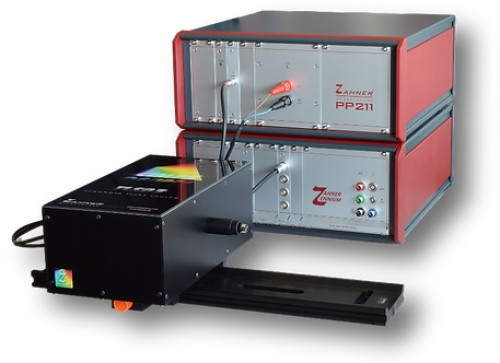
Zahner photoelectrochemistry station
We have a wide range of electrochemical and photoelectrochemical facilities for testing of energy materials. These include:
- Xe lamp 400W with solar simulator filter, potentiostat and electrochemical cell: for photocurrent measurements of photoelectrodes in multiple electrolytes, in a three-electrode (half cell) configuration, under 1 sun simulated conditions (with IR filter to avoid overheating of lamp and sample).
- Zahner photoelectrochemistry station: fully integrated photoelectrochemical workstation for high accuracy QE/IPCE measurements. Also with a tuneable LED light source that allows to measure photocurrent response at different wavelengths and possibility of measure electrochemical impedance spectroscopy, too.
- Rotating Disc Electrode (RDE) and potentiostat (with FRA for measuring electrochemical impedance spectroscopy): RDE in three-electrode electrochemical cell configuration with potentiostat to measure the electrocatalytic activity of new materials towards the oxygen evolution reaction (OER) and oxygen reduction reaction (ORR)
- Potentiostat Biologic (+/- 5V -10A) and redox flow battery system: for measuring the performance of electrode materials in full cell configuration for redox flow cell applications.
Contact: Dr Ana Sobrido
Electrospray Laboratory
The comprehensive facility enables detailed investigation into the dynamics of droplets and jets using high-speed video cameras, a high-resolution microscope, and a vacuum chamber. Several diagnostic tools are available for measuring the properties of liquids, including a viscometer, a pendant drop tensiometer and an electrical conductivity meter.
Flight Simulator
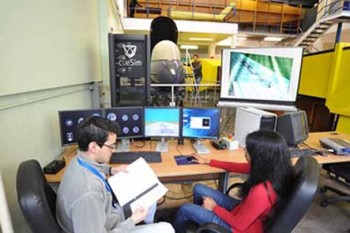
Flight Simulator
The high-fidelity flight simulation training device, which is based on the Airbus A320, is equipped with advanced flight control software, immersive graphics, and an integrated electromechanical system. Its open architecture supports flight simulation research through integration of novel aircraft designs, custom flight control systems, additional airport environments, next-generation guidance and control interfaces, and communication with innovative Air Traffic Management systems.
This facility is currently being upgraded
Green Energy Hub
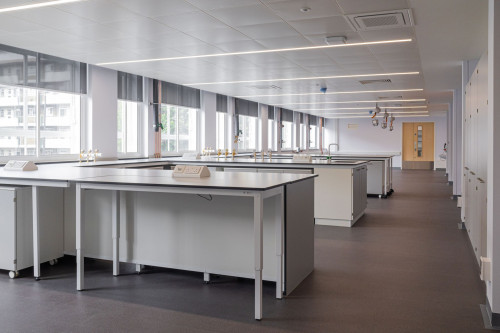
Green Energy Hub
A new state-of-the-art laboratory following £3m investment, designed to accelerate breakthroughs in green energy technologies. A comprehensive laboratory network equipped with advanced wet chemistry facilities, including extraction hoods for materials preparation and processing. The labs feature ample space for both benchtop experiments and large, free-standing equipment, as well as a dust-free device testing laboratory, fostering an environment where innovation can thrive.
Hardness Test Machine
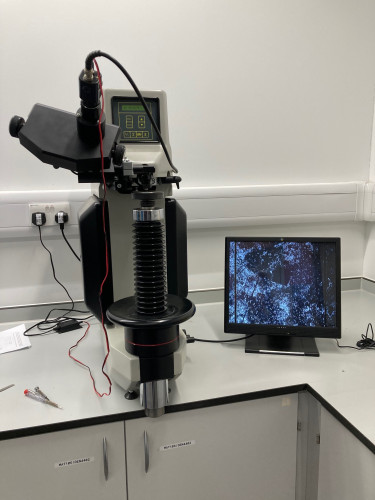
Hardness Test Hardness tester available in G27
Zwick-Roell Hardness Test Machine. Loads from 3kgf to 150kgf. The indenters available are Rockwell diamond and spherical, Brinell (1.0 andf 2.5mm diameter) and Vicker's diamond. At these load levels mainly used for metals and ceramics. There is an attached camera for recording processes.
Contact: Dr Erica di Federico
Human Performance Lab
We analyse motion and forces in people during walking, running and many other activities. Our state-of-the-art facilities allow us to assess normal subjects, elite athletes, patients who have had an operation, or individuals with some disability. The wide range of equipment available includes: force plate in the ground, treadmill that can accommodate wheelchairs and motion analysis facilities, and sensors for indicating when muscles are activated and an oxygen consumption monitor. All of these are used for undergraduate, clinical and research projects.
Contact: Dr Stuart Miller
Impact Testing Facilities
Consists of a gas gun system which can launch objects at high speed alongside a liquid jet impact system to study soft material impact, erosion and penetration. High-quality measurements are conducted using a range of high-speed cameras combined with a split Hopkinson pressure bar for high strain-rate testing of materials.
Intelligent BioFluids Lab
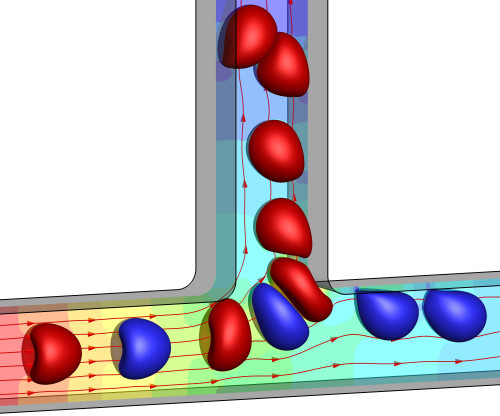
Hydrodynamic interaction of microcapsules in a microchannel bifurcation (front cover highlight in Journal of Fluid Mechanics volume 923)
Research in the intelligent biofluids and cell mechanics laboratory focuses on high-fidelity mechanical modelling and real-time ultra-high-throughput characterisation of blood and cancer cells, drug-delivery microcapsules. We also investigate flow and solute transport in extracellular matrices and interactions between flow and endothelial cells, with a particular interest in the endothelial glycocalyx. Our group integrates the state-of-the-art AI tools, mechanistic models, with microfluidic systems and high-speed imaging, to develop next-generation technologies for healthcare challenges such as cancer and cardiovascular diseases.
Contact: Prof Wen Wang, Prof Yi Sui
The Makerspace
The Makerspace is an open access workshop for all SEMS and EECS students and staff. It is a space where students can make things, this might be prototyping, model making or simply working on personal projects. The primary aim of the Makerspace is to give students the practical, and creative skills they will require to be effective engineers.
Contact: Mr James Wayland
Material Manufacturing Facilities
The Polymer Processing Facility supports polymer and composites processing, including melt-processing and solution processing. There are also manufacturing suites for fibre-reinforced composite materials and rubbers, alongside capabilities in vacuum-assisted resin-transfer moulding, hot pressing and spark plasma sintering for ceramics.
Materials Characterisation Lab
Contains a variety of analytical equipment to cover a broad range of tests, which are used for structural, thermal and mechanical analysis. The facility offers an analysis service to university-based and external users, both industrial and academic. The lab is located in the Engineering building (Room 232) at the Mile End campus. There are a range of charges for using these facilities.
Contact: Dr Shoghik Hakobyan
Materials Engineering in Magnetic Fields (MagMat) Facility
MagMat is a unique capability in the UK for the synthesis and processing of materials in strong magnetic fields (SMF) known at MagMat. This project provides the initiative for a new era of materials science where magnetic field driven forces are coupled with materials synthesis and processing to produce novel materials. Magneto related phenomena have special relevance to the fields of functional materials and biosciences, where the engineering outcomes are often a result of multifunctional couplings. The use of high magnetic fields in combination with a wide range of processing techniques could lead to new phenomena, materials and manufacturing routes. Our Work is focused on four main research areas of interest where strong magnetic fields can be employed to engineer a wide range of materials - texturing, synthesis, processing and self-assembly.
Contact: Prof Michael Reece
Contact: Dr Salvatore Grasso
Mechanical Testing Facilities
This facility features advanced Instron testing machines for evaluating the mechanical properties of various materials in applications ranging from aerospace components to biomaterials. These systems apply compression, tension, and torsion forces, enabling detailed analysis of materials' strength, modulus, and other key characteristics. The lab can also conduct precise hardness measurements and more complex mechanical evaluations using BOSE systems, including a biaxial tester.
Contact: Dr Erica Di Federico
Mechanical Workshop
The purpose-built, fully equipped mechanical workshop manufactures parts for research projects in the Centre. The workshop contains both manual and CAD/CAM controlled milling and turning machines for high-speed production of complex components using a variety of materials. A state-of-the-art FDM 3D printer enables rapid prototyping in a broad range of thermoplastics
Mechanobiology and BioAFM Laboratories
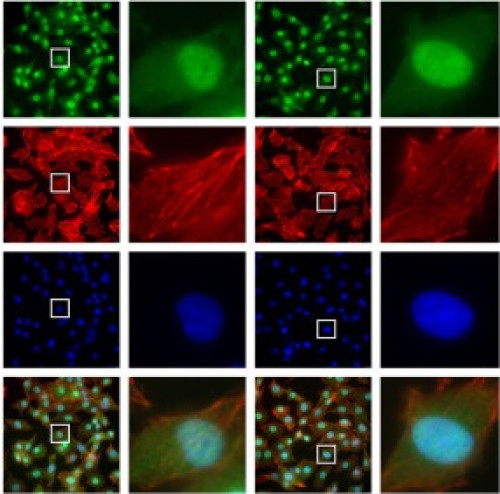
Epifluorescence images of YAP (green) and Actin (red)
A range of bioreactor systems for subjecting living cells to dynamic mechanical loading in the form of tensile strain (Flexcell), compressive strain (Bose) and fluid shear (Osciflow & Bose). These loading systems are mounted in cell culture incubators for long term loading studies.
We have equipment for measuring cellular mechanical properties and mechanically stimulating individual cells using biological atomic force microscopy (bioAFM), micropipette aspiration or custom built scanning ion conductance microscopy. We also have a range of mechanical test machines for measuring the mechanical properties of biological tissues and biomaterials under dynamic, uniaxial and biaxial loading conditions.
Contact: Prof Martin Knight
Medical Electronics Facility
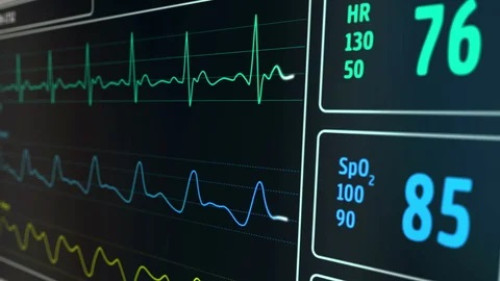
Electrocardiogram (ECG) and Oxygen Saturation level (SpO2) physiological signals.
A customised facility for undertaking electronics work with specific expertise in the medical field. The wide range of medical equipment includes ECG monitors, ultrasound probes and pulse oximeters. The laboratory also contains a wide range of electronics components and prototyping boards, as well as microprocessor software, to make your own circuitry. The facility is used for a range of taught laboratories that focus on circuit design, and is also available for MSc projects.
Contact: Ms Jun Ma
Nano Fluids Research Labs
The School has a rapidly expanding group working on heat transfer from nano-fluids which are liquids containing nano-scale particles that act to alter the fundamental thermo-physical properties of the fluid and so increase heat transfer rates. The specific research includes formulation of nanoparticles and stable nanofluids in a purpose built laboratory. In addition, a new test facility is being constructed to investigate flow and heat transfer behavior of nanofluids in micro-tubes. The research will include mechanistic analysis of micro/nanoscale energy transportation and enhanced heat transfer performance.
NanoVision Centre
The NanoVision Centre is a state-of-the-art microscopy unit which brings together the latest microscope techniques for structural, chemical and mechanical analysis at the nanometer scale (1/1000000 mm). The facility contains an impressive range of electron microscopes, scanning probe microscopes and associated analytical equipment for use in the cutting-edge research being conducted by students and staff.
Contact: Dr Subash Rai, Dr Qasim Zia
Photoelectrochemical Imaging Lab
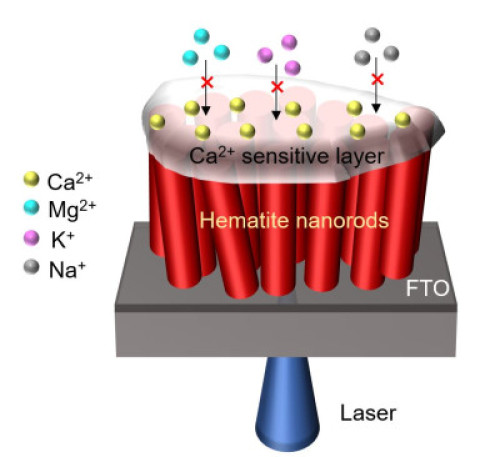
Photoelectrochemical calcium ion sensor based on hematite nanorods
Light-Addressable Potentiometric Sensors (LAPS) and Scanning Photo-induced Impedance Microscopy (SPIM) are imaging techniques based on photocurrent measurements at electrolyte/insulator/silicon (EIS) field-effect structures. They are capable of measuring local changes in the surface potential (LAPS), which can be used to image ion concentrations, and of measuring the local impedance (SPIM).
LAPS and SPIM have great potential as tools for functional electrochemical imaging of the attachment area of cells, providing information such as ion concentration, extracellular potentials and cell impedance. The techniques are particularly attractive for analysing responses of cells with planar polarisation or cell types that separate one compartment from the other as the cell-surface attachment area is not accessible to conventional electrophysiological and electrochemical imaging.
Contact: Prof Steffi Krause
Photoelectron Spectroscopy Facility
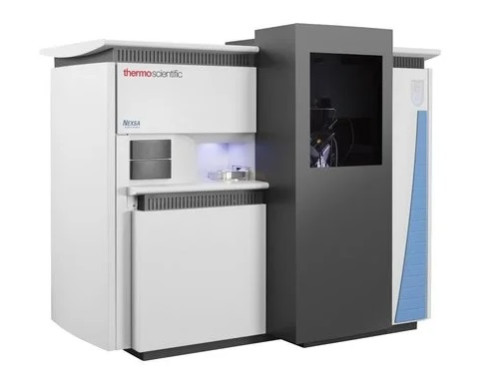
ThermoFisher Nexsa X-ray Photoelectron Spectrometer (XPS) System
A ThermoFisher Nexsa X-ray Photoelectron Spectrometer (XPS) System enables a range of photoelectron spectroscopy measurements on a range of materials. It includes facility for:
- X-ray photoelectron spectroscopy (XPS)
- Ultraviolet photoelectron spectroscopy (UPS)
- Reflection electron energy loss spectroscopy (REELS)
- Ion Scattering Spectroscopy (ISS)
Contact: Dr Richard Whiteley
Photovoltaic device testing
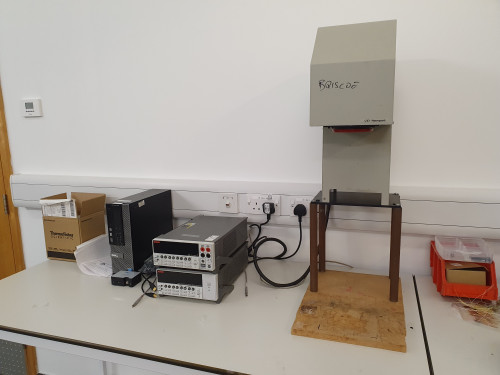
Newport AAB solar simulator
Newport AAB solar simulator with AM1.5 full solar illumination for testing of photovoltaic devices. Test facilities include a Keithley 2400 source-measure unit and associated PC and test software.
Contact: Dr Joe Briscoe
Piezoelectric energy harvester tester
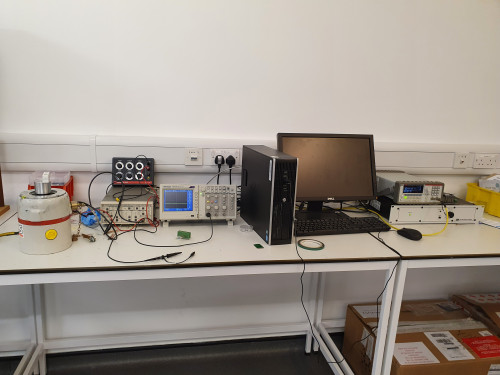
Full test facilities for testing output performance of piezoelectric energy harvesters, including:
- Permanent magnetic shaker (Brüel & Kjær LDS V406)
- Digital oscilloscope (Tektronix TDS2012C)
- Low noise current preamplifier (Stanford Research Systems SR 570)
- Signal generator and amplifier
- Variable resistance box
Contact: Dr Joe Briscoe
Polymer Processing Facility
As the first UK Materials department (1967) and one of the five Science Research Council funded Polymer Research Centres in a Materials Department, we have a long standing history and extensive research expertise in polymer and composites processing. Ranging from melt-processing (single and twin-screw extruders, injection moulding, film blowing, solid state stretching) to solution processing (electrospinning, spin coating), a wide range of polymer processing and composites equipment is available at our lab.
Contact: Dr Dimitrios Papageorgiou
Q-Arena
The integrated state-of-the-art research facility enables multidisciplinary, collaborative studies on innovative robotic platforms and control robots, in addition to bi-directional communication between robotic devices and the tracking system. The platform is equipped with six degrees-of-freedom multi-camera tracking, a virtual reality stereo-projection screen and a bimanual haptic interaction system with wearable touch feedback gloves.
Queen Mary+Emulate Organs-on-Chips Centre
The QM+Emulate Organs-on-Chips Centre provides open access to Emulate’s Organs-on-Chips technology to enable researchers to use Emulate’s supported organ models which include: Liver, Proximal Tubule Kidney, Lung and Intestine or develop organ models of their design to expedite their experiments. Emulate's state-of-the art organ-chip platform is available for fundamental research or for use as part of a drug discovery pipeline. Expert staff are on hand to support with training and use of the platform. The Centre also provides opportunities for collaboration with Emulate and support for commercialisation and translational impact.
Contact: Prof Martin Knight
Spectroscopy Facility
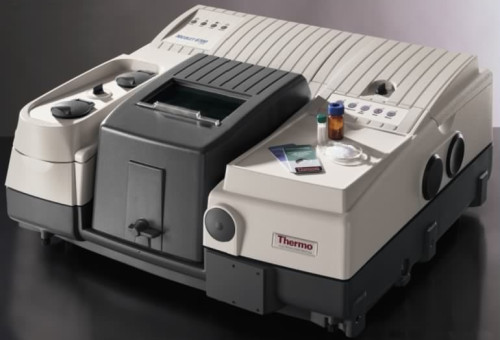
FTIR equipment for materials analysis.
We have a variety of sophisticated spectrometers which are used to identify specific compounds and investigate composition of materials prepared as either a liquid, solid, film or powder. These devices include:
- Fourier Transform Infrared Spectroscopy (FTIR)
- Raman Spectroscopy
- Near InfraRed Spectroscopy (uv-vis NIR).
Contact: Dr Shoghik Hakobyan
Sustainable Thermal Systems Laboratory
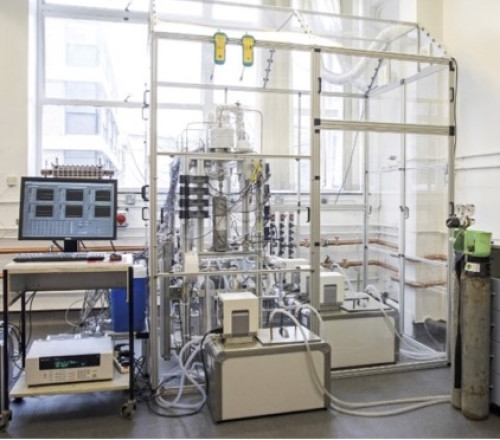
Microchannel rig to measure local condensation and flow boiling heat transfer using inverse method.
The School has an international reputation for research into two-phase flow with heat transfer. In particular, it has five test rigs for investigating various aspects of condensation and flow boiling heat transfer which has direct applications to steam power plant, nuclear power plant, organic Rankine cycle (ORC), refrigerators and air conditioners, heat pumps, solar assisted heat pump based heating systems, advanced thermal management of data centre and electric vehicle batteries and air conditioning systems for electric vehicles. These include a microchannel rig for accurate measuring local heat transfer during condensation and flow boiling of low GWP refrigerants and refrigerant mixtures up to high pressure and high temperature and a full tube bank rig for investigating the complex interactions between tube geometry and vapour and liquid flow in real condensers. Several rigs are being used to investigate and optimise highly enhanced finned tubes for increasing heat transfer rates for both internal and external flows and so reducing condenser size. In addition, two calibration baths allow calibration of thermocouples with an accuracy of +/-0.05 K from -15 oC to 200 oC.
Contact: Professor Huasheng Wang
Thermal Analysis Facility
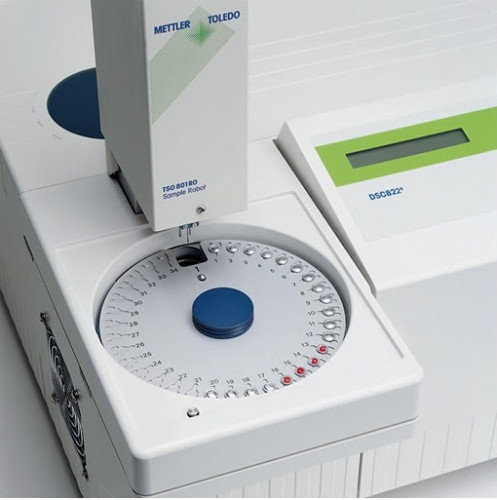
Differential Scanning Calorimeter.
We have a variety of excellent techniques for analysis the thermal properties of materials such as melting temperature, glass transition temperature, viscosity, thermal expansion and thermo-mechanical properties over a range of temperatures (-150 to 1600C). The techniques include:
- Differential Scanning Calorimetry (DSC)
- Rheometery
- Thermo Gravimetric Analysis (TGA)
- Simultaneous Thermal Analysis (STA)
- Dynamic Mechanical Analysis (DMA)
- Dilatometry.
Contact: Dr Shoghik Hakobyan
Thermoelectric Generator Testing Facility
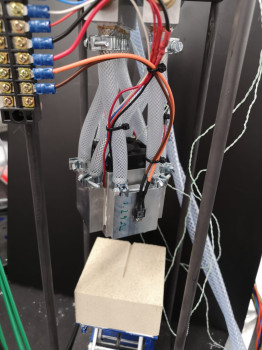
Thermoelectric generator testing
A bespoke thermoelectric generator testing facility is available for testing ceramic and printed thermoelectric generators. It can operate in clamped mode with a feedback system to maintain constant pressure. It can alternatively operated in air-cooled mode using an airjet of defined velocity and feedback-controlled temperature.
Contact: Dr Oliver Fenwick
Thermoelectric Suite
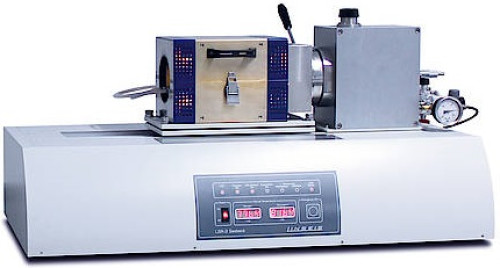
Electrical conductivity and Seebeck measurement (Linseis LSR3)
We house a suite of instruments for the accurate measurement of thermoelectric materials in bulk or thin film form, including:
- Laser Flash Analyzer (Netzsch 453 LFA)
- Electrical conductivity and Seebeck measurement (Linseis LSR3)
- Thin film zT (electrical and thermal conductivity, and Seebeck measurement) (Linseis TFA)
- MMR Seebeck System (MMR Inc)
- Optical in-plane thermal conductivity rig.
- Home-built Seebeck measurement rig.
We also have a bespoke thermoelectric generator testing rig with clamped and air-cooled modes.
Contact:
Prof Michael Reece
Dr Oliver Fenwick
Undergraduate Teaching Labs
We have recently invested £30M in major new teaching laboratories to provide state-of-the-art experimental facilities specifically for teaching.
Opened in 2016 the lab provides a space on the ground floor with step free access and has a height adjustable bench installed for wheelchair users.
Contact: Babatunde Aramide
Whitehead Aeronautical Laboratory
The experimental aerodynamics laboratory contains three low-speed wind tunnels, three high-speed wind tunnels and an acoustics facility. The available diagnostics combine traditional methods (force balances, pressure sensors, flow and surface visualisation systems, hot-wire anemometry) with state-of-the-art optical systems (particle image velocimetry, high-speed schlieren imaging) and microphone arrays to provide detailed flow field information.
X-Ray Diffraction Facility
The X-Ray Diffraction Facility (XDF) offers a full diffraction analysis service in materials science, structural chemistry, structural biology and solid state science. The facility recently welcomed a new Xenocs Nano-inXider SAXS/WAXD system for X-ray scattering, allowing us to characterise advanced materials to a new level of detail.
Contact: Dr Richard Whiteley
We have some additional virtual tours of various facilities on our SEMS Tours page.


